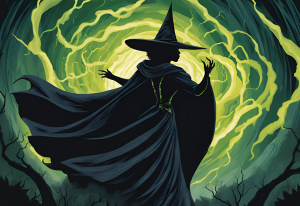Ana de Armas has been nominated for Best Actress at the 95th Academy Awards for her performance in “Blonde.” Yet the Netflix film—a highly controversial, fictionalized take on Marilyn Monroe’s life—feels more like a horror film for the modern feminist than anything else.
With this article, I do not wish to critique de Armas performance. It is a shame that her talent is showcased in a film with unsubstantiated facts.
The film warrants its NC-17 rating, while making a spectacle of Monroe’s suffering. It comes as no surprise that this film was written and directed by a man. Throughout the nearly 3-hour film, Monroe—formerly Norma Jeane Baker—is portrayed as a helpless, passive victim. “Blonde” continues to perpetuate a stereotype about Monroe that she was unable to escape throughout her film career.
During her 15-year career, Monroe appeared in 29 films. Yet the film chooses to tell time through Monroe’s relationship with men such as Joe Dimagio, Arthur Miller, and President John F. Kennedy. All of the men are referred to by Monroe as “Daddy.” Eww! It’s as if the film wants to refer to Monore’s absent father as the root to all her problems. Each of these men go unnamed in the film, listed as “ex-athlete,” “author,” and “president,” respectively in the credits, whereas De Armas is listed as Norma Jeane. What is the point of protecting the men who wronged her, while we are subjected to so much of her pain?
The film is not entirely fictional, as it is public knowledge that DiMaggio beat Monroe after she shot the iconic subway skirt scene in “The Seven Year Itch.” We know that she advocated for fair pay in “Gentlemen Prefer Blondes.” And it is true that her mother was sent to an asylum.
However, aside from fetishizing Monroe, the film doesn’t tell the audience anything new about her; it simply works as a highlight of all her worst moments, and furthers the belief that she was a sex-addict by fabricating a polyamorous relationship with Charlie Chaplin Jr. and Edward G. Robinson Jr, to which there is no evidence to suggest that ever happened.
Neither is there any evidence to suggest Monore ever had an abortion, let alone three against her will. The film becomes very uncomfortable as Monroe’s unborn fetus speaks to her, pleading not to be killed again. A talking CGI fetus comes off as extremely pro-life, and is especially harmful in 2022, the same year that Roe vs Wade got overturned, considering we have no knowledge of Monroe’s politics on the matter.
Why didn’t the film want to highlight Monroe’s positives, such as her friendship with Ella Fitzgerald? The actress enjoyed Fitzgerald’s music, and after receiving word that she was forbidden from headlining a Los Angeles venue for reasons rooted in race, Monroe called and negotiated for Fitzgerald to perform, vowing to attend every performance in the front row. Of course the film skipped right over this as there is nothing to sexualize.
The theme of deceptive identities, and the battle between Marilyn Monroe and Norma Jeane Baker, works as a thread throughout the film; yet, De Armas delivers all of her dialogue in an airy voice, as if she is impersonating Monroe’s on-screen persona, even during her off-screen moments meant to show the real Norma Jeane Baker. In turn, the film becomes the very thing it attempts to critique.
While the 2000 novel of the same title by Joyce Carol Oates contains the warning, “Blonde should be read solely as a work of fiction, not as a biography of Marilyn Monroe,” if you knew nothing else about her, it could easily be mistaken for truth; hence the danger of speculative fiction.
The opinions on this page do not necessarily reflect those of The Sandspur or Rollins College. Have any additional tips or opinions? Send us your response. We want to hear your voice.






Comments are closed.